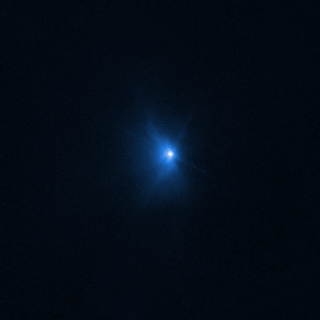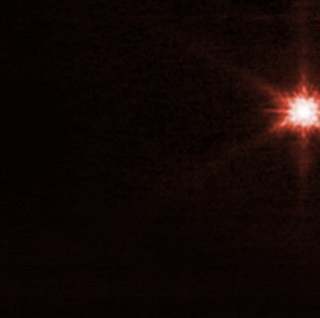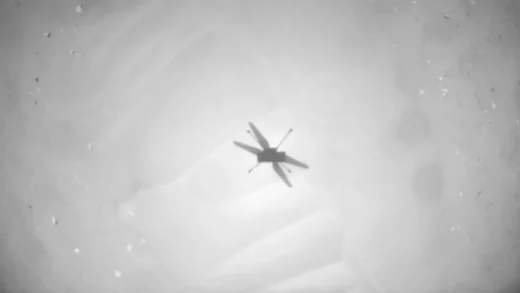NASA’s “Great” Telescopes Capture Detailed Views of DART Impact
The James Webb Space Telescope and the Hubble Space Telescope, two of NASA’s Great Observatories, have captured images of a special NASA experiment designed to deliberately smash a spacecraft into a small asteroid in the first-ever in-space test for planetary defense. For the first time, Webb and Hubble observed the same celestial target at the same time during these observations of NASA’s Double Asteroid Redirection Test (DART) impact.
On September 26, 2022, at 7:14 p.m. DART purposefully crashed into Dimorphos, the asteroid moonlet Didymos’ double-asteroid system. It was the first time the kinetic impact mitigation technique has ever been tested, which involves employing a spacecraft to deflect an asteroid that doesn’t pose a threat to Earth and alter its orbit. DART is a test for defending Earth against potential asteroid or comet hazards.
Together, the Hubble and Webb observatories can answer interesting scientific questions about the development and structure of our solar system. The synchronized Hubble and Webb observations are more than merely a technical accomplishment for each telescope.

NASA Administrator Bill Nelson says Webb and Hubble show “what we’ve always known to be true at NASA: We learn more when we work together.” For the first time, Nelson added, “Webb and Hubble have simultaneously captured imagery from the same target in the cosmos: an asteroid that was impacted by a spacecraft after a seven-million-mile journey. All of humanity eagerly awaits the discoveries to come from Webb, Hubble, and our ground-based telescopes – about the DART mission and beyond.”
Scientists will be able to learn more about the features of Dimorphos’ surface, the amount of material ejected by the collision, and the velocity at which it was ejected by combining observations from Webb and Hubble. Additionally, Webb captured the hit in infrared, while Hubble recorded it in visible light, using different wavelengths of light. The distribution of particle sizes in the expanding dust cloud will be revealed by observing the impact at a number of wavelengths, allowing scientists to assess whether it emits predominantly fine dust or a mix of large and small particles. This data will be combined with ground-based telescope observations to assist researchers in better understanding how an asteroid’s orbit can be altered by a kinetic collision.
Before and After Impact Sites Are Captured by Webb
Before the crash, Webb made one observation of the impact position. Then, over the course of the following few hours, he made further observations. A tight, compact core is evident in images from Webb’s Near-Infrared Camera (NIRCam), with material plumes appearing as wisps streaming away from the impact point.

Given the asteroid’s rapid ascent through the sky, observing the impact with Webb posed special difficulties for the mission operations, planning, and science teams. The teams put in further effort in the weeks before the impact to enable and test a means of tracking asteroids moving more than three times faster than the initial speed limit set for Webb as DART approached its target.
Principal investigator Cristina Thomas of Northern Arizona University in Flagstaff, Arizona said that they had nothing but tremendous admiration for the Webb Mission Operations folks that made that a reality. “We have been planning these observations for years, then in detail for weeks, and I’m tremendously happy this has come to fruition,” added Thomas.
In the months ahead, researchers also intend to use Webb’s Mid-Infrared Instrument (MIRI) and Near-Infrared Spectrograph to study the asteroid system (NIRSpec). Researchers will learn more about the asteroid’s chemical components via spectroscopic data.
Over the course of five hours, Webb observed the effect and shot ten images. The data was gathered as part of the Association of Universities for Research in Astronomy’s Webb Cycle 1 Guaranteed Time Observation Program 1245, which was led by Heidi Hammel (AURA).
Hubble Images Display Ejecta Movement After Impact
Likewise, Hubble recorded observations of the binary system 15 minutes before DART collided with Dimorphos’ surface and again 15 minutes thereafter. Hubble’s Wide Field Camera 3 captured images that demonstrate the impact in visible light. Ejecta from the impact is visible as rays stretching from the asteroid’s body. The more noticeable, widely spread out spike of ejecta to the left of the asteroid is in the general vicinity of where DART approached.
Astronomers need to look closer in order to comprehend some of the rays’ apparently slight curves. Astronomers determined from the Hubble images that the brightness of the system increased three times after impact and stayed unchanged even eight hours later.

Credits: Science: NASA, ESA, Jian-Yang Li (PSI); image processing: Alyssa Pagan (STScI)
Over the three following weeks, Hubble plans to check in on the Didymos-Dimorphos system ten more times. Hubble took 45 images in the moments leading up to and immediately following DART’s collision with Dimorphous.
Jian-Yang Li of the Planetary Science Institute in Tucson, Arizona, who led the Hubble observations said, “When I saw the data, I was literally speechless, stunned by the amazing detail of the ejecta that Hubble captured.” “I feel lucky to witness this moment and be part of the team that made it happen,” Li added.
In the moments leading up to and immediately after DART’s collision with Dimorphos, Hubble snapped 45 images. The Hubble data collection was included in the General Observers Program 16674 of Cycle 29.
According to Andy Rivkin, DART investigation team lead of the Johns Hopkins University Applied Physics Laboratory in Laurel, Maryland stated that this is an “unprecedented view of an unprecedented event.”
The best space scientific observatory in the world is the James Webb Space Telescope. In addition to looking beyond our solar system to distant planets orbiting other stars, Webb will delve into the mysterious structures and origins of the cosmos and our role within it.
While NASA and ESA collaborated globally on the Hubble Space Telescope project, run by NASA’s Goddard Space Flight Center in Greenbelt, Maryland, Webb is a global campaign run by NASA in conjunction with the Canadian Space Agency and the European Space Agency (Canadian Space Agency).


